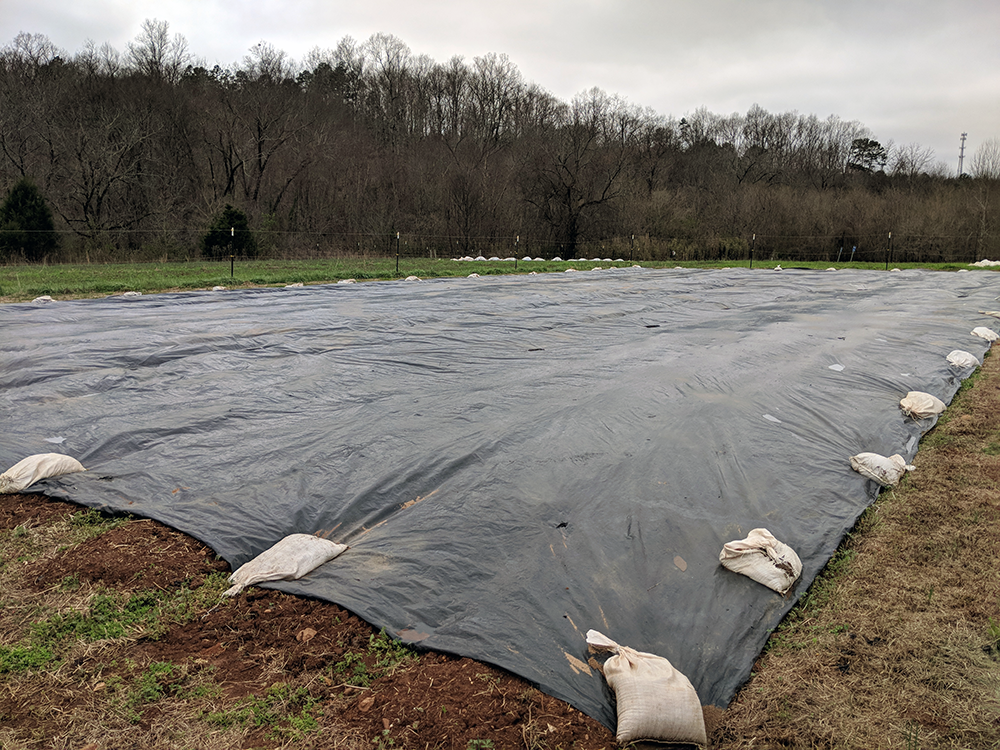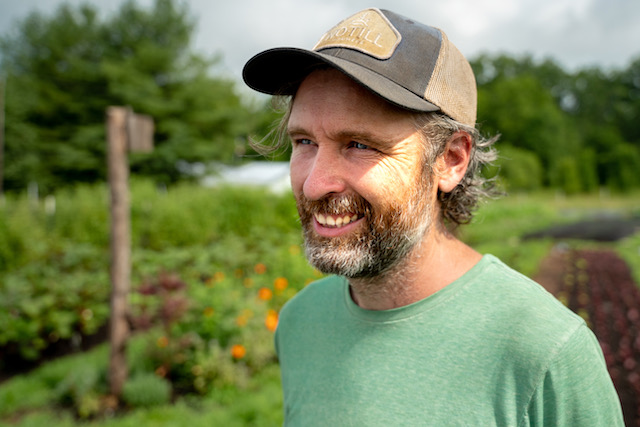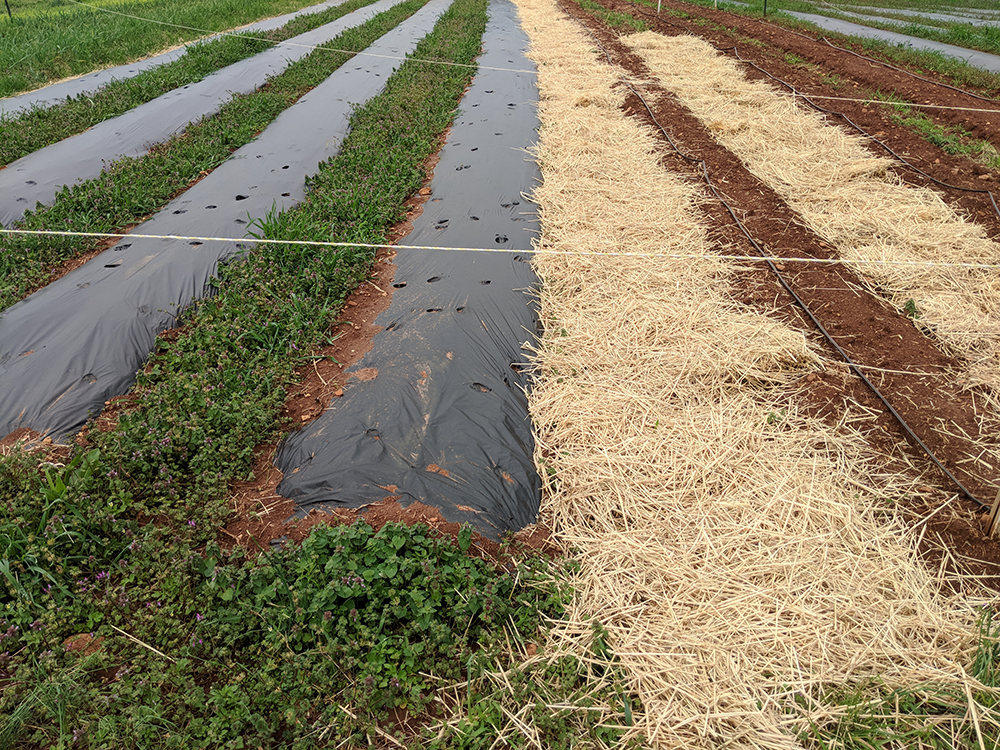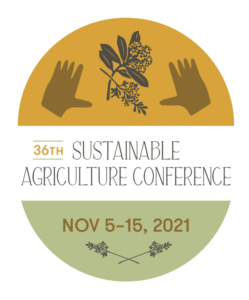by Angie Lavezzo, CFSA Communications Coordinator | Friday, Oct. 15, 2021 –

Soil cultivation, particularly with traditional tilling methods, is so common, they’ve gone unquestioned for generations. Most farmers and gardeners are taught how and when to turn the soil to manage weeds and prepare for planting. Tilling offers relatively easy and instant results to turn in soil amendments, aerate and break up clumpy soil, and produce a loose and plantable loam. An increasing amount of research has come back, showing that this repeated cultivation comes at a high cost.
Our soils are more alive than we could accurately comprehend. A single teaspoon of garden soil can contain more microorganisms than there are people on earth! This includes millions of species and billions of organisms such as bacteria, algae, scores of nematodes, earthworms, beetles, ants, and mites. Each teaspoon contains several yards of fungal filaments responsible for processing organic matter into rich, dark, stable humus in the soil. All of these bacteria, protozoa, and fungi are collectively referred to as microbes. Every time we disturb our soils by heavy digging and tilling, we destroy our soil structure and kill microbes.
So does going no-till offer a better way to manage our soil health? Are there strategies that, with practice, can increase plant health, improve soil structure, increase carbon sequestration, and produce high-nutrient food? Jesse Frost, the author of The Living Soil Handbook and speaker of two workshops at the 2021 Sustainable Agriculture Conference on compost and no-till systems, believes the answer is yes. No-till practices coupled with cover cropping and regular composting are likely to be a key player in sustainable agriculture’s future.

To clarify some common questions we hear from farmers interested in adopting no-till practices in their operations, we sat down to chat with Jesse Frost.
CFSA: What are a few steps a grower can begin to take to transition away from traditional soil cultivation?
Jesse Frost: First thing I always tell people is to do the research first about what no-till systems make sense in their context, and then start small. Trial a few things and make sure they are going to work for you.
Also, keep in mind that the benefits are not always overnight—it may take a full season to really see the advantages as the soil life and soil structure rebound.
CFSA: What is the best way to convert existing beds to no-till?
Jesse Frost: Gradually! You may still need to broadfork or subsoil the beds to break up compaction, but start slowly and ease back on tillage. Maybe simply go more and more shallow with your tillage and observe the results. Or add a compost mulch, or another mulch you have access to, and see how the crops perform.

Straw and cover crop between crop rows of two different no-till bed types
CFSA: Are there cover crops that would be easier to manage for a beginner?
Jesse Frost: It depends a bit on the system. Potatoes and sweet potatoes can be a bit confounding, but just know that you will have to dig up soil to get them out. Otherwise, there are no limitations to the crops that can be grown in a no-till system; some just take more creativity than others.
“The benefits are not always overnight—it may take a full season to really see the advantages as the soil life and soil structure rebound.”
CFSA: Are there cover crops that beginning growers should be cautious of?
Jesse Frost: Not every cover crop makes sense for every context. Success with a cover crop comes down to simply knowing what your goals are. So, for instance, you would not want to use a rye or vetch cover crop if you want the cover crop to die over the winter. Those are very hardy cover crops and will need to be terminated in the spring, whereas peas, lettuces, and radishes perhaps make more sense for growing fast, creating a light mulch, keeping the soil in place, but also being gone in the spring when it’s time to plant again.
CFSA: Can reduced tillage or zero tillage save money on your farm?
Jesse Frost: When you cut out the tillage, you stop making conditions right for weeds to grow. You generally increase yield and productivity by decreasing disease and pest issues. You can reduce runoff and nutrient loss. You can increase water holding capacity by building soil organic matter. So, in short, absolutely!
Want to learn more about practical ways to incorporate no-till techniques into your crop and farm management? Join us at the 2021 Sustainable Agriculture Conference, Nov. 5-15! There, Jesse is teaching two sessions:
- NOV. 7 – Four Types of Compost for No-Till Systems | Virtual Workshop
Many no-till systems rely heavily on compost, but not all compost is created equal and should not be used interchangeably. Some composts are better for mulching, fertilizing, inoculating, and general plant nutrition, great for all-around use. Misusing them can be an expensive mistake. This workshop will discuss each type of compost, how best to use them, and how to distinguish each when purchasing from a supplier or making it on-farm. - NOV. 15 – Organic No-Till for Small-Scale Farms | On-Farm Intensive
At Faithfull Farms in Chapel Hill, NC, Jesse will co-present this in-person outdoor intensive with Faithfull Farm’s Howard Allen, Mary Carroll Dodd of Red Scout Farm (Black Mountain, NC), and CFSA’s Mark Dempsey.This session will bring together leading growers in small-scale no-till systems to demonstrate and discuss successes, challenges, and techniques for building soil health, reducing compaction, managing water, increasing yields, and enhancing biodiversity. Workshop leaders will discuss overcoming barriers to transitioning to conservation tillage systems, and challenges once a no-till system is established. Presenters will demonstrate flipping and prepping beds, cover cropping methods, tarping for weed suppression and termination, irrigation, equipment and tools, as well as the best no-till methods for growing in high tunnels.Whether you’re looking to transition to a no-till system, or ready to improve your skills, join this session and the growing community of small-scale no-till growers to share resources, learn best practices, and master techniques.
>>On-Farm Intensive tickets are sold separately. See our tickets page for more info.
Learn More About SAC 2021
 Since 1986, CFSA’s annual Sustainable Agriculture Conference has drawn farmers, foodies, researchers, educators, and activists for a celebration of innovation in local sustainable agriculture.
Since 1986, CFSA’s annual Sustainable Agriculture Conference has drawn farmers, foodies, researchers, educators, and activists for a celebration of innovation in local sustainable agriculture.
In 2021, the ten-day conference will be in two formats: virtual and on-farm intensives. All virtual workshops will be a blend of formal presentations, panels, discussions, and Q&As with speakers from the Carolinas and beyond.
Whether it’s learning more about no-till farming methods with Jesse Frost, what exciting workshops you can count on watching, or how to register today, learn more over on our conference website!



